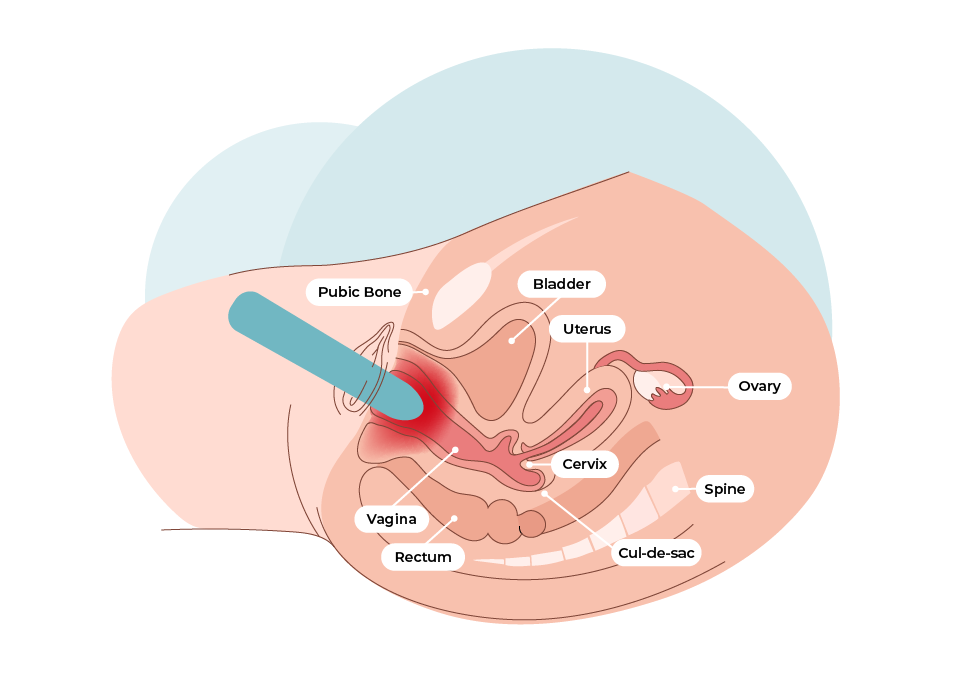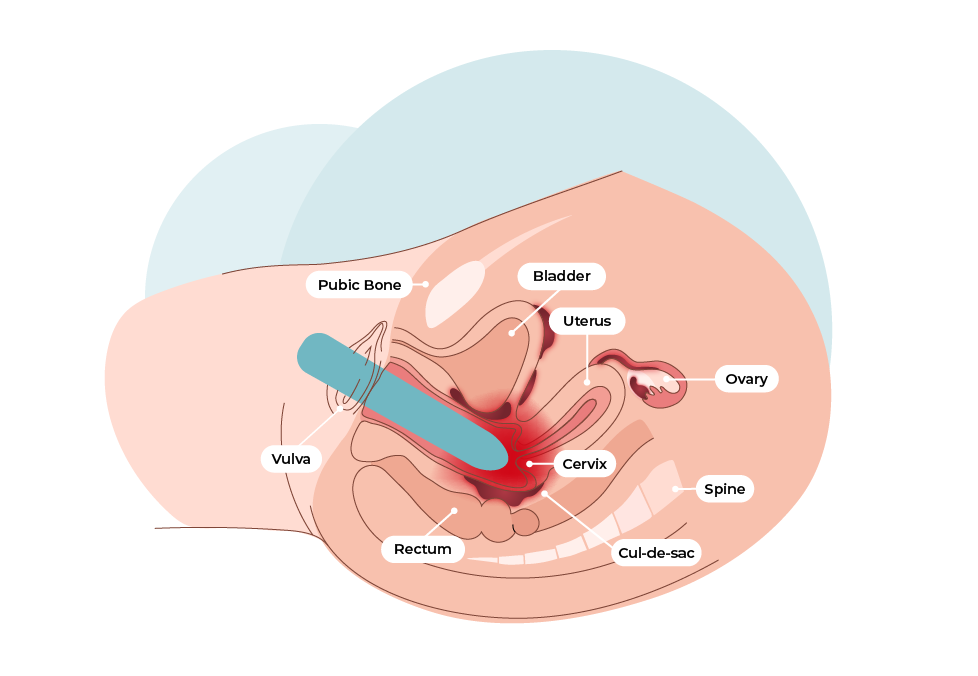Painful Sex
What is Dyspareunia?
The medical term for painful sex is dyspareunia (dis-puh-ROO-nee-uh), defined as persistent or recurrent genital pain that occurs just before, during or after intercourse1. Talk to your doctor if you’re having painful intercourse. Treatments can eliminate or lessen this common problem.

Deep Dyspareunia
The most common type of painful sex for people with endometriosis occurs with deep vaginal penetration, as shown in the image below2.
More than 50% of people with endometriosis feel deep pain2.
There are many different reasons why you might feel deep pain during or after sex3.
• Changes in the Body
• Changes in the Brain
• Emotions and Experiences
Research has shown that painful sex might also be caused by a combination of the different factors listed above3.
Superficial Dyspareunia
When you have sex, you might feel pain at the entrance of your vagina. This is described as superficial pain.
Up to 30% of people with endometriosis feel superficial pain5.
Entry pain is commonly caused by a different condition called provoked vestibulodynia (ves-ti-byew-low-DIH-NIA) not endometriosis6 . This can feel like pain, burning, stinging, stabbing, or rawness at the opening of the vagina. The discomfort can be constant, or only happen when the area is touched5.
Entry pain can also be related to the pelvic floor muscles around the vagina7.
If you want more information about provoked vestibulodynia, speak to a healthcare provider.
- Seehusen, Dean A., MD, MPH, Baird, D. C., MD, & Bode, D. V., MD. (2014). Dyspareunia in women. American Family Physician, 90(7), 465-470. PMID: 25369624
- Orr, N. L., Wahl, K., Joannou, A., Hartmann, D., Valle, L., Yong, P. J., & International Society for the Study of Women’s Sexual Health. Special Interest Group on Sexual Pain. (2018). Deep dyspareunia : Review of pathophysiology and proposed future research priorities. doi:10.1016/j.sxmr.2018.12.007
- Yong, P. J. (2017). Deep dyspareunia in endometriosis: A proposed framework based on pain mechanisms and genito-pelvic pain penetration disorder. Sexual Medicine Reviews, 5(4), 495. doi:10.1016/j.sxmr.2017.06.005
- Orr, N. L., Noga, H., Williams, C., Allaire, C., Bedaiwy, M. A., Lisonkova, S., . . . Yong, P. J. (2018). Deep dyspareunia in endometriosis: Role of the bladder and pelvic floor. The Journal of Sexual Medicine, 15(8), 1158-1166. doi:10.1016/j.jsxm.2018.06.007
- Bao, C., Noga, H., Allaire, C., Williams, C., Bedaiwy, M. A., Sadownik, L. A., . . . Yong, P. J. (2019). Provoked vestibulodynia in women with pelvic pain. Sexual Medicine, 7(2), 227-234. doi:10.1016/j.esxm.2019.03.002
- Yong, Paul J., MD, PhD, FRCSC, Mui, J., MD, Allaire, Catherine, MDCM, FRCSC, & Williams, Christina, MD, FRCSC. (2014). Pelvic floor tenderness in the etiology of superficial dyspareunia. Journal of Obstetrics and Gynaecology Canada (JOGC), 36(11), 1002-1009. doi:10.1016/S1701-2163(15)30414-X
- Pacik PT. Understanding and treating vaginismus: a multimodal approach. Int Urogynecol J. 2014 Dec;25(12):1613-20. doi: 10.1007/s00192-014-2421-y. Epub 2014 Jun 4. PMID: 24894201.


